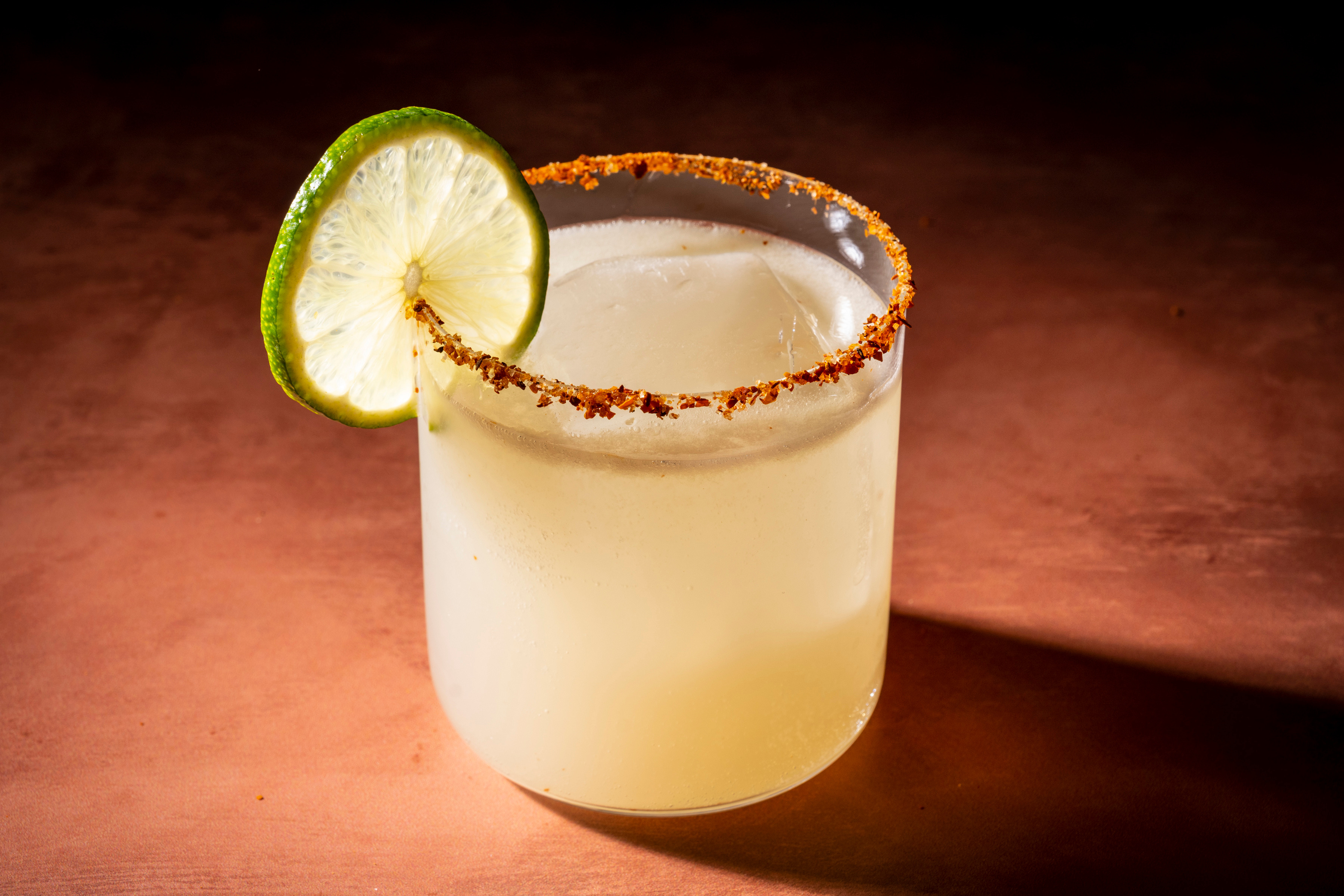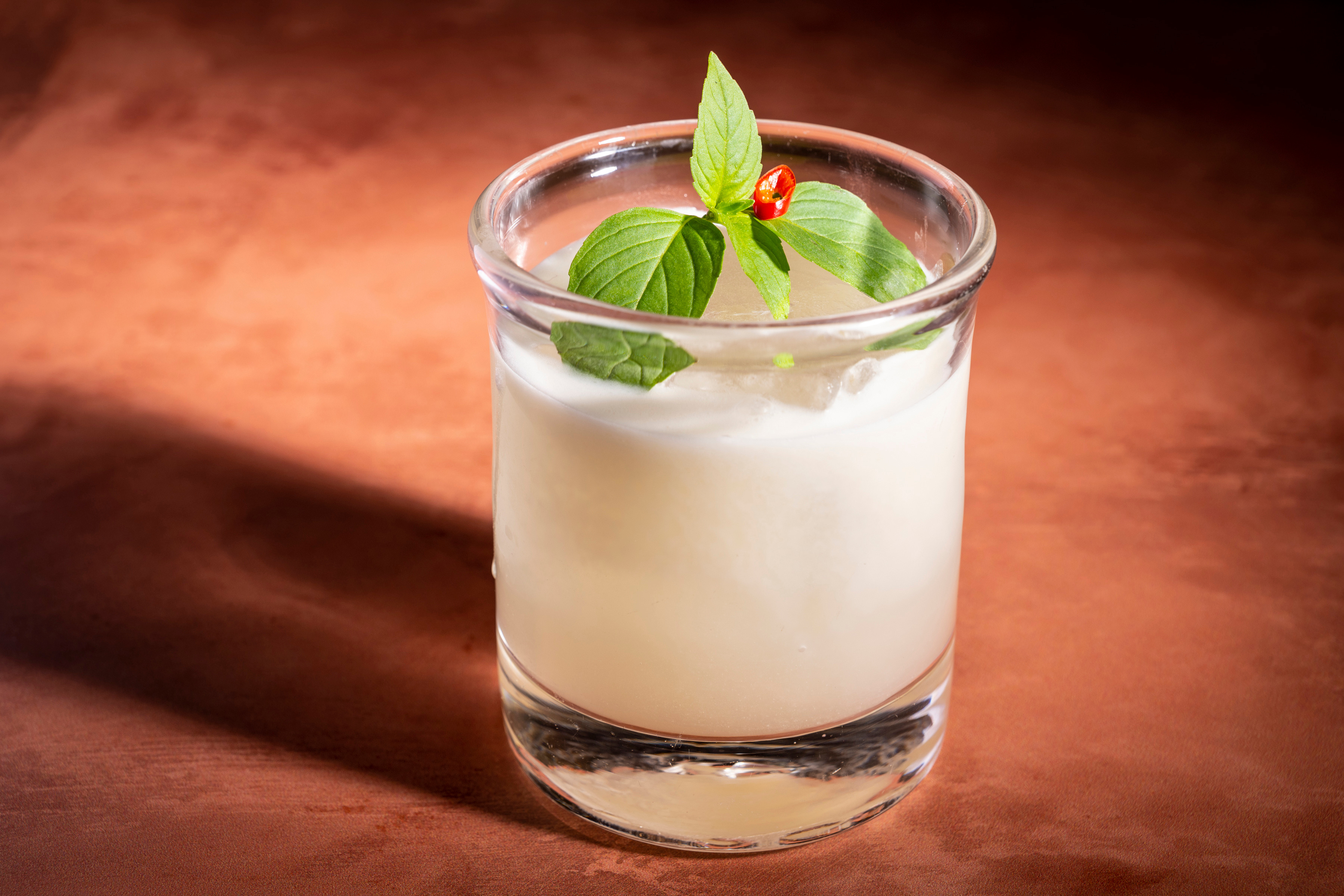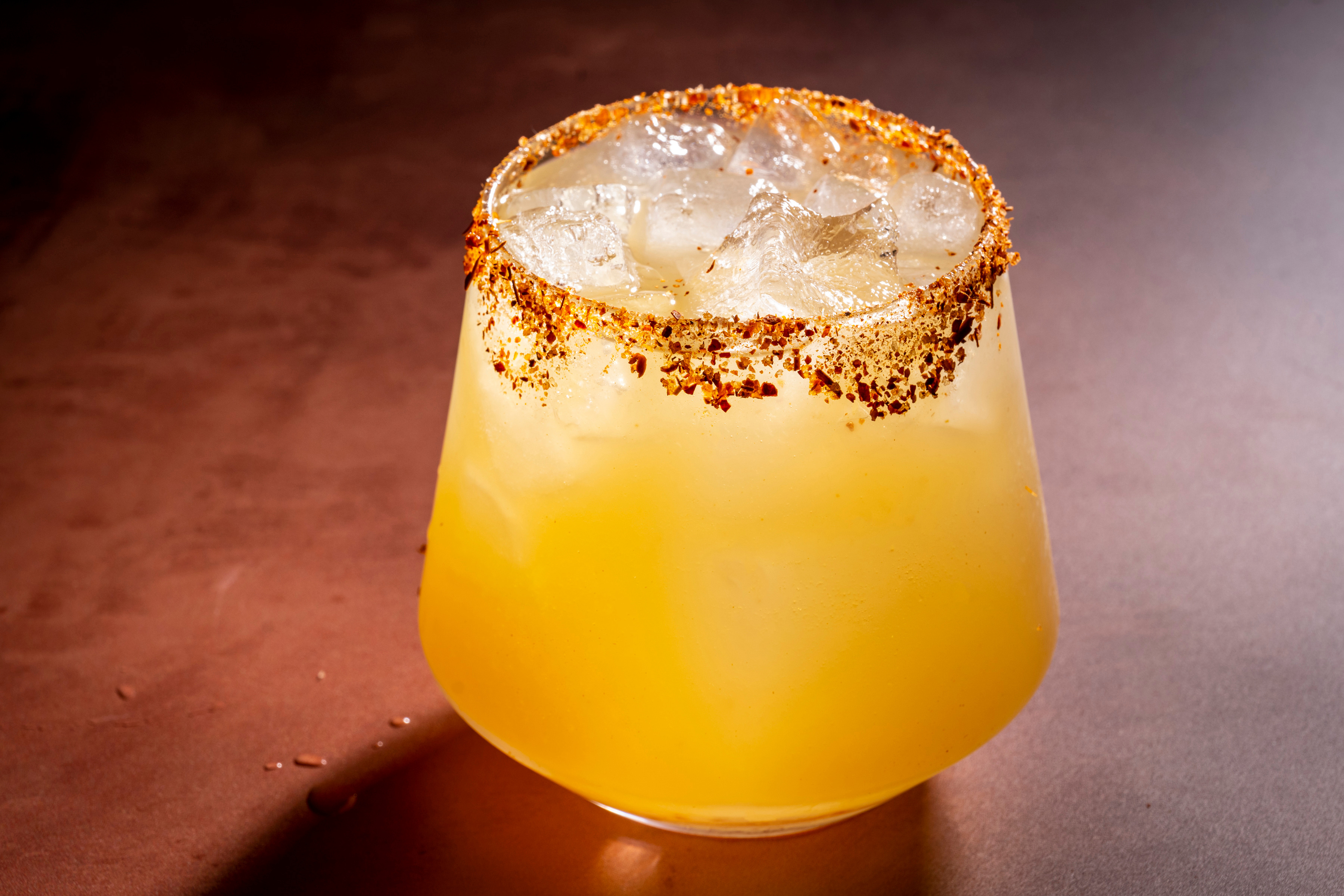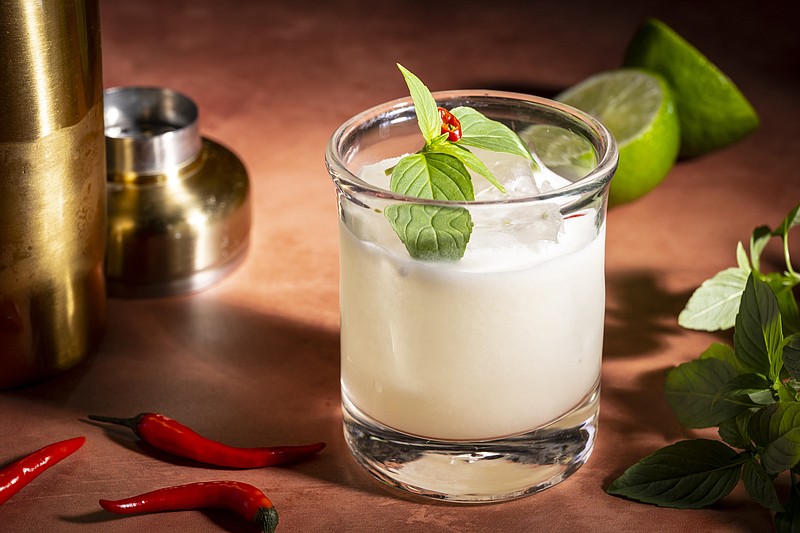There are cocktail bars today that seem almost church-like — hallowed spaces where the faithful come to taste and engage in acts of exegesis, analyzing every nuance and extolling how spirit and bitters come together in the glass.
The margarita is not a drink of such bars.
Like most cocktails, the margarita — a combination of tequila, lime and triple sec that has been around since at least the 1930s, with a roster of claimants to its invention — has been endlessly upgraded and complicated by the modern craft cocktail movement. And there are serious and sublime agave spirit bars, in Mexico and domestically, that treat agave spirits, tequila and especially mezcal, as the complex and varied spirits they are.
Still, the vast volume of margaritas is still shaken up and slurped down at countless summer parties, mid-tier bars and Mexican restaurants, places with sunny patios and bottomless baskets of chips and salsa. The blender whirs, the sour mix splooshes and Roberto's your tío. The deepest contemplation you'll be doing is wondering how you're going to get that guacamole stain out of your T-shirt.
But in New Orleans recently, I popped into Vals, the gas station-turned-Mexican-restaurant started by the team that runs celebrated cocktail haven Cure, and we got a round of margaritas that reminded me how good the drink can be. Vals' frozen margarita was perfectly balanced — tart, sweet, the spirit gentle but present in the flavor, complemented by its Tajín chile-lime-salt rim.
As I sipped, I considered the various mediocre-ritas I've encountered -- the too-diluted, the cloying, those dragged down by the lemon Pledge flavor of bad sour mix or Splitting Headache brand tequila. Of late, though, the most common problem, for me, has arrived in the form of a relative newcomer: the spicy margarita, in which the heat of chiles is added to the classic template.
The spicy marg is a drink that, done well, is everything I want in warmer weather. The tart-sweet-booze balance takes on a new dimension when peppers enter the scene. Incorporated well, they add complementary flavor and a zing of welcome heat. Overdone, you can end up with a stunt drink, the sort of thing base-jumpers would sip as they plunge off skyscrapers, yelling "extreme!" into each other's GoPros.
Inviting chiles to your margarita is like asking a newbie to your longstanding happy hour: Will they get along with your other friends? Will they dominate the conversation? Will they throw their weight around? If a fight occurs, how do you get guacamole out of cotton?
The best way to make a spicy marg mind its manners will depend on just how much of a hothead you are. I've had spicy drinks I loved on the first sip, only to be silently suffering and wishing I had ordered differently by the fifth — palate fatigue can be acute with spicy drinks.
I often opt to add heat in tiny touches — as with that spicy/sour Tajín Clásico on the rim of the frozen margarita at Vals, or chile pepper concoctions doled out in drops. I like Bittermens' Habanero Hellfire Shrub, which is hot and tart; the Smoked Chili bitters from Hella and Fuego bitters from El Guapo are also good pepper-uppers.
There are also chile liqueurs, such as Ancho Reyes' original Ancho and the Verde, the former sweet and smoky, the latter retaining more of the raw poblano chile's green vegetal notes. If you're looking to try out the liqueurs, you can start by working them into a standard margarita template, replacing or supplementing a portion of triple sec.
The above brands are all worth playing with and generally offer consistency of flavor and heat-level. The danger of the cheapest method — working with fresh chile peppers — is that it can lack that consistency. As any lover of guacamole knows all too well, peppers are mercurial, especially the common jalapeno. You can get one with a modest burn and then the next one will have all the fire of a tax seminar. Serranos are more reliable, and for the basic version of a spicy margarita (recipe below) I generally use a couple of wheels of it, dropping them into the cocktail shaker with the ice.
Along with that basic template, I've provided a couple of spicy margarita variations to try: The Tigerita (or Thai-gerita if you're feeling cute) incorporates coconut, Thai basil and bird's-eye chiles into the drink, and the Pineapple-Habanero margarita has three heat sources: fresh habanero and ancho chile liqueur in the drink, and Tajín Clásico on the rim of the glass. Both can be a little zippy or nigh nuclear, depending on how much of the angry little peppers you put in the shaker (as written, the recipes are geared toward milder palates).
Here are some basic guidelines for working with fresh chile peppers to create your own perfect spicy margarita.
■ Know your peppers. Their heat levels are measured in Scoville units, which essentially measure how much capsaicin -- the compound in peppers that causes the burn on the tongue -- is in the pepper. At 2,000-8,000 Scovilles, the gentle jalapeno quavers before some of the peppers sought by sadomasochistic eaters. Carolina Reapers, currently the hottest known, often measure more than 2 million Scovilles.
■ Chiles vary. The variation in peppers isn't just heat — the burn is only part of their flavor. Habanero and some other high-heat peppers also have sweet tropical fruit notes. Jalapeno is more vegetal, with some of the same bell pepper flavors that can show up in silver tequilas. And then you have ancho chiles (dried ripe poblanos), which are milder and smoky, which can make their flavor a great pairing with a smoky mezcal or add some interest to a standard silver tequila marg.
■ Divide and conquer: The hot stuff in peppers is concentrated in the ribs (the paler fibrous structures that surround the seeds) and the coating of the seeds. Including ribs and seeds in the pepper you put in your margarita will make it hotter; trim them off if you want to avoid that boost.
■ Longer steep, hotter drink. The more time a pepper spends in the mix — especially submerged in alcohol, a natural solvent — the more its flavor and heat will be extracted. In testing drinks, I found that the same amount of chile added to the shaker before the rest of the ingredients, instead of just before shaking, often resulted in a noticeably hotter drink. And if you don't strain those chile solids out when you pour the drink, it will continue to infuse as you sip.
■ Practice safe slice. Wear protection — glove up if you're working with anything much hotter than a jalapeno. It's amazing how easy it is to chop up some hot peppers, wash your hands and go on your merry way, only to be unpleasantly confronted by their compounds' staying power when you're taking out your contact lenses later. (Don't ask how I know this.)
THE RECIPES
This is a bright and balanced margarita with adjustable heat (use jalapeno chiles if you want subtle heat; dial it up to serranos or add more chile if you'd like more zip). Blanco tequila works well here, but if you want a smokier version, go with a mezcal, such as Del Maguey Vida or Ilegal Joven.
Agave syrup is available at many grocery and liquor stores; substitute simple syrup (equal parts sugar and water dissolved and cooled) if you can't find it. Tajín, a chile-lime seasoning salt, is available at many grocery stores, at Hispanic markets and online.
 Spicy Margarita, with Tajin Clasico seasoning on the rim. (For The Washington Post/Scott Suchman)
Spicy Margarita, with Tajin Clasico seasoning on the rim. (For The Washington Post/Scott Suchman)
Spicy Margarita
- 1 tablespoon Tajín Clásico Seasoning, or more as needed (optional, for garnish)
- ¼ ounce (1 ½ teaspoons) agave syrup, plus more for garnish (optional)
- Ice
- 2 ounces tequila or mezcal
- 1 ½ ounces fresh lime juice
- ½ ounce triple sec, such as Cointreau
- 1 to 4 small slices jalapeno or serrano pepper
- Lime wheel or jalapeno slice, for serving (optional)
If using the Tajín, on a small plate, scatter the seasoning. On another small plate, drizzle a circle of the agave syrup the same circumference as your rocks glass. Dip the rim of the glass in the syrup, then in the Tajín so the seasoning sticks. (Or, you can swipe a lime wedge around the glass rim before dipping the rim in the spice, but the syrup is more effective in getting the seasoning to stick.)
Add ice to the glass and set it aside.
Fill a cocktail shaker with ice. Add the tequila, lime juice, triple sec, agave syrup and chile slices and shake hard for about 15 seconds. Double-strain into the prepared glass, add a lime wheel or jalapeno slice, if using, and serve.
Makes 1 drink.
■
Think of this spicy margarita riff, with Southeast Asian-inflected flavors and heat, as a Thai-gerita if you prefer. The amount of Thai bird's-eye chiles you opt to incorporate can make it a gentle or fierce beast. If you can't find these chiles, you can substitute serranos. The ice can be cubes or one big rock.
Liber & Co. Toasted Coconut Syrup can be found online, but you can substitute Coco Lopez or Coco Real. Thai chiles (often called bird's-eye chiles) and Thai basil can be found at well-stocked supermarkets, farmers markets (depending on the season) and Asian markets.
 The Tigerita (or Thai-gerita) offers Southeast Asian flavors and heat. (For The Washington Post/Scott Suchman)
The Tigerita (or Thai-gerita) offers Southeast Asian flavors and heat. (For The Washington Post/Scott Suchman)
Tigerita
- Ice
- 6 leaves Thai basil, plus additional for garnish (optional)
- 2 to 4 slices red Thai chiles, plus additional for garnish (optional)
- Pinch of fine salt
- 2 ounces tequila or mezcal
- 1 ¼ ounces fresh lime juice
- ¾ ounce Liber & Co. Toasted Coconut Syrup (can substitute Coco Lopez or Coco Real)
Add a large ice cube to a rocks glass and set aside.
In a cocktail shaker, combine the Thai basil, chile slices and salt, then fill it with ice. Add the tequila or mezcal, lime juice and coconut syrup. Shake hard, about 15 seconds, then double-strain into the glass. Garnish with basil leaves and a chile slice, if you like, and serve.
Makes 1 drink.
■
For true spice lovers, this spicy, bright and balanced margarita has three heat sources at work: slices of habanero and a dash of ancho chile liqueur in the drink, and chile-lime salt on the rim. We recommend a smoky mezcal, such as Del Maguey Vida, to stick with the fiery theme, but a blanco or reposado tequila will work well, too. Note: You may want to use gloves when slicing the habaneros.
Pineapple gomme syrup (Small Hand and Liber & Co. are both good brands) can be found at well-stocked liquor stores and online. Tajín is available at many grocery stores, at Hispanic markets and online.
 The Pineapple-Habanero Margarita combines heat and sweet. (For The Washington Post/Scott Suchman)
The Pineapple-Habanero Margarita combines heat and sweet. (For The Washington Post/Scott Suchman)
Pineapple-Habanero Margarita
- 1 tablespoon Tajín Clásico Seasoning, or more as needed, for garnish
- 1 ounce pineapple gomme syrup, plus more for the spice rim (see note)
- Ice
- 2 ounces mezcal or tequila
- 1 ounce fresh lime juice
- ½ ounce Ancho Reyes Original chile liqueur
- 1 to 2 thin slices habanero chile pepper
On a small plate, scatter the Tajín. On another small plate, drizzle a circle of the pineapple gomme syrup the circumference of your rocks glass. Dip the rim of the glass in the syrup, then in the Tajín, so the seasoning sticks. (Or, you can swipe a lime wedge around the glass rim before dipping the rim in the spice, but the syrup is more effective in getting the seasoning to stick.)
Add ice to the glass and set it aside.
Fill a cocktail shaker with ice. Add the mezcal, lime juice, pineapple syrup, chile liqueur and chile slices. Shake hard for about 15 seconds, then double-strain into the prepared glass and serve.
Makes 1 drink.
Editor's note: If you can't find pineapple gomme syrup, substitute simple syrup made with pineapple juice in place of water — combine 1 cup sugar and 1 cup pineapple juice in a small saucepan; bring to a low simmer over low heat and cook, stirring, until sugar is dissolved. Cool and refrigerate until ready to use. Syrup will keep for about a week.

